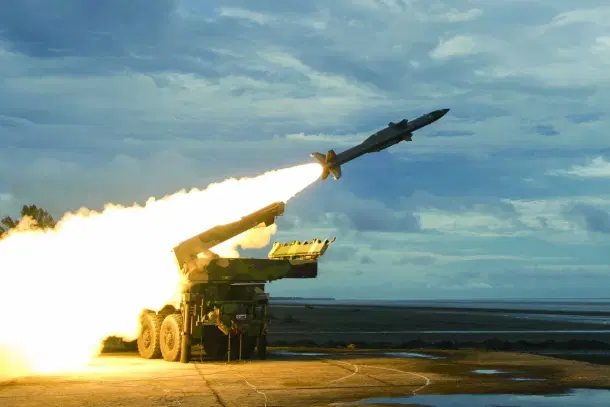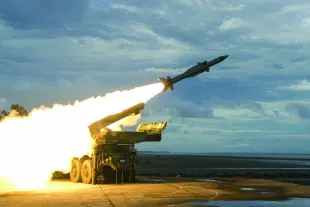News Brief
Indian Army Strengthens Air Defence Capabilities With Successful High-Altitude Akash Prime Missile Trials In Ladakh
Arzoo Yadav
Jul 17, 2025, 03:31 PM | Updated 03:31 PM IST
Save & read from anywhere!
Bookmark stories for easy access on any device or the Swarajya app.


The Indian Army has successfully tested the Akash Prime surface-to-air missile system in Ladakh, marking a major achievement for India's indigenous air‑defence capabilities, reported The Hindu.
Conducted at an altitude exceeding 15,000 feet, the trials involved the Army’s Air Defence Corps collaborating closely with senior scientists from the Defence Research and Development Organisation (DRDO).
The high‑altitude test took place in eastern Ladakh’s thin atmosphere, where the missile scored two direct hits on fast‑moving aerial targets.
"India has achieved a significant milestone by successfully destroying 2 Aerial High Speed Unmanned targets at high altitude in Ladakh Sector on 16th July by Akash Prime, which is the upgraded variant of Akash Weapon System for the Indian Army," the Defence Minister's office said in a statement.
Akash Prime, an upgraded version of the earlier Akash missile, now features a fully indigenous active radio‑frequency seeker.
This enhancement ensures superior precision regardless of weather or terrain.
Additionally, engineers modified ground systems to perform reliably under extreme cold and low‑oxygen conditions typical of high‑altitude environments.
The missile can be deployed at elevations up to 4,500 metres and can intercept targets at ranges of around 25–30 km.
This variant reportedly saw action during Operation Sindoor, where it successfully countered aerial threats, including Chinese-made jets and Turkish drones from Pakistan.
Following these successful tests, the Army plans to raise its third and fourth Akash regiments equipped with the Prime variant.
This step strengthens India's layered air defence architecture and aligns with its broader push for self‑reliance (Atmanirbhar Bharat) in strategic defence technologies.





